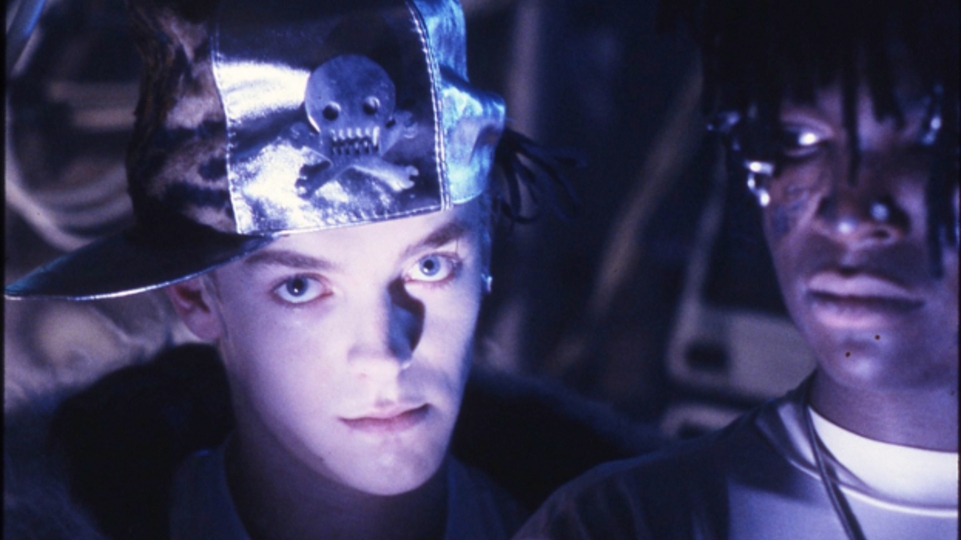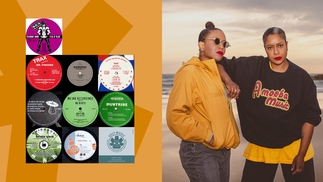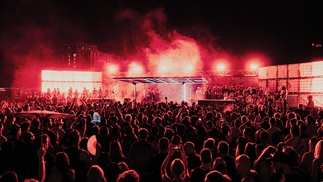Game Changer
The seminal tracks that altered dance forever

“‘Killer’ started life as an instrumental, and it was only ever going to be one until I met Seal,” Adamski tells DJ Mag. “He came to [big rave] Sunrise 5000 at Santa Pod, although I didn’t meet him there. He walked in when I was playing and he had an epiphany.” Seal wanted to record with Adamski immediately, and Adamski — real name Adam Tinley — liked the sound of Seal’s voice from a demo of ‘Crazy’ that he’d heard. He told Seal to pick one of his instrumental tracks, and one of the rave scene’s most iconic tracks was born.
 Adam can still remember where he was when he recorded ‘Killer’, he says. “I was in my flat in York Way in Kings Cross [in London] on my own. From memory, it feels like it took me about 15 minutes — programming the sounds, getting that freaky analogue, odd main sound. I suppose music-making time perception is completely out of kilter, but I remember it was a morning.
Adam can still remember where he was when he recorded ‘Killer’, he says. “I was in my flat in York Way in Kings Cross [in London] on my own. From memory, it feels like it took me about 15 minutes — programming the sounds, getting that freaky analogue, odd main sound. I suppose music-making time perception is completely out of kilter, but I remember it was a morning.
“I had an Ensoniq SQ-80 synth/sequencer that was an analogue digital hybrid synth, a 909 drum machine, and the percussion was a Yamaha drum machine that I really can’t remember the model name of,” he continues. “The percussion was an accident, the notes of the bassline playing on the wrong Midi channel triggered this drum machine, playing those tom-tom sounds that go with the bassline. Basically I didn’t know what I was doing, but it sounded good.”
Into music from a very young age, Adamski’s first band, The Stupid Babies, signed to Fast Product, the label run by the Human League’s manager, when he was just 11. He moved to London as a disaffected teenager, lived in squats in Hackney, and started an electro-punk act Diskord Datkord with his friend Johnny Slut [later of electroclash club Nag Nag Nag] on vocals. Falling for acid house in the late ’80s, he visited Ibiza, and in 1989 he started playing solo live gigs in the flourishing London rave scene. On the Enterprise Allowance scheme as a self-employed keyboard player, he was catapulted from nowhere to one of the top names in UK rave very quickly. He signed to MCA Records, released the squiggly acid piano shuffler ‘NRG’, and then the ‘Live & Direct’ album that cobbled together bits and bobs of live recordings from raves.
Seal picked out the track that he wanted to sing over down at MCA Publishing’s studio, but it didn’t have a chorus at first. “I told him to sing his lyrics like Led Zeppelin, in a bluesy rock style,” recalls Adam. “I felt that was the feel that it lent itself to.” The A&R man at MCA told Seal to go away and write the chorus, and a guy called Guy Sigsworth — who went on to work with Björk and Madonna — co-wrote the chorus with Seal. “He came up with the ‘Solitary brother...’ bit and the melody,” reports Adam. When it was finished, Seal and Adamski took a copy down to their favourite London club to hang out in — Solaris on a Sunday night in Farringdon. “We gave it to DJ Eren to play, and it cleared the dancefloor!” chuckles Adam. “I was like, ‘What a disaster’. But then it started getting really good reviews and picked up.”
The stomping drums, uncoiling acidic squiggles and Seal’s soul-searching vocal sent crowds at raves and in clubs into raptures. The rave pixie says he’s proud that ‘Killer’ had an anti-racist message — a line from Seal says, “Racism in among future kings can only need to no good”. “It was very much the spirit of the times, the rave scene — and club scene — was very mixed, more so than ever before,” he says. “It was documenting the changing times.”
He’s also glad that it doesn’t really sound like other tunes from around the same time. “Yeah, and it was quite slow, 120bpm, the default setting when you turn on a sequencer,” he informs. “I had this funny theory about it, and made ‘NRG’, ‘Killer’ and ‘Space Jungle’ all at 120bpm — a trilogy of personal conceptual nonsense. “I went to Ibiza a lot around that time — still do quite often — and there wasn’t this bpm nazi thing going on then, it was a lot slower,” he adds. “There were things like Snap ‘The Power’ and Aphrodisiac [‘Song Of The Siren’] and the house music I liked was slower. It didn’t feel that slow to me, on my first album the fastest thing was only about 125bpm — and that actually felt fast!”

Adamski was as surprised as anyone that ‘Killer’ shot to No.1 all over the world. “It was weird hearing it everywhere, and it was a strange experience suddenly being famous, recognised and chased by teenagers in the street,” he remembers. “It affects people in different ways.” He played the Pyramid Stage at Glastonbury, and then immediately decamped to LA to record a new album, as ‘Killer’ wasn’t on his first one. He spent too much time hanging out with the Happy Mondays and Paul Oakenfold, who were also recording in LA, and ended up with ‘Dr Adamski’s Musical Pharmacy’, which he describes as “pretty shit”. By now he’d fallen out with Seal, who had been offered a solo deal by MCA. “I had an iffy manager at the time who I think played divide and conquer and did some shit-stirring with his own interests at heart,” he says. After that furore died down they became friends again, though, and Adam remixed Seal’s ‘Kiss From A Rose’ — the first piece of music he’d worked on in ¾ time.
Now, after two decades of immersing himself back into the electro underground, living for a while in Italy and Berlin, Adamski is launching his new Neo-Waltz project. Based around tracks in ¾ time, his original tracks are a mesh of dancehall, UK funky and digidub, while there’s also a wealth of musical history to sample — as well as appropriate leftfield songs by various 20th century acts. “A lot of major bands like the Beach Boys, the Stones, The Clash, Led Zeppelin, The Stranglers have all got a ¾ track, it’s when they go a bit left-of-centre and odd,” Adam says. “I want people to party like it’s 1799!”
‘Killer’, meanwhile continues to have a life of its own. Seal re-recorded it for his solo album just after it first came out, taking it back into the charts on his way to becoming a major soul star, and then George Michael covered itnot long after. “At school me and my mates used to really take the piss out of Wham! fans and all that ‘Wake Me Up Before You Go Go’ insipid vile nonsense, so it was surreal that I made this song that was deemed coverable by an artist like him,” Adamski smirks.
German trance bloke ATB, pop trio the Sugababes, Scottish indie band Sons & Daughters, proto-punk goddess Nina Hagen, and various Norwegian and Finnish heavy metal bands are just some of those who have covered ‘Killer’ since. “It’s always flattering, but if I picked a tune from all the untold tunes I’ve made that I wanted to represent me and define me, it wouldn’t have been ‘Killer’. What would it have been? Maybe the one I did with Nina Hagen, or maybe ‘NRG’. “Am I fed up of talking about it? Well, people coming up to me saying ‘Do you still talk to Seal?’ is a bit annoying. Someone even said the other day ‘Where’s Seal?’ like we live together like Bert & Ernie. As a matter of fact, we probably were a bit like Bert & Ernie...”





